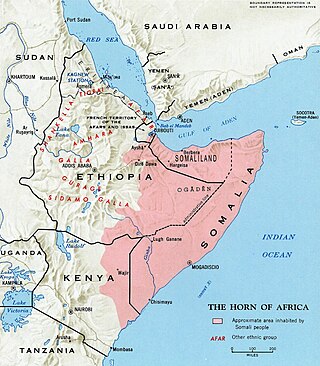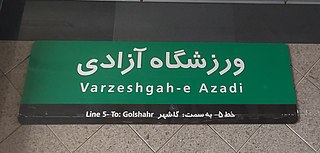Y, or y, is the twenty-fifth and penultimate letter of the Latin alphabet, used in the modern English alphabet, the alphabets of other western European languages and others worldwide. According to some authorities, it is the sixth vowel letter of the English alphabet. Its name in English is wye, plural wyes.
Finnish orthography is based on the Latin script, and uses an alphabet derived from the Swedish alphabet, officially comprising twenty-nine letters but also including two additional letters found in some loanwords. The Finnish orthography strives to represent all morphemes phonologically and, roughly speaking, the sound value of each letter tends to correspond with its value in the International Phonetic Alphabet (IPA) – although some discrepancies do exist.

A digraph or digram is a pair of characters used in the orthography of a language to write either a single phoneme, or a sequence of phonemes that does not correspond to the normal values of the two characters combined.
When used as a diacritic mark, the term dot refers to the glyphs "combining dot above", and "combining dot below" which may be combined with some letters of the extended Latin alphabets in use in a variety of languages. Similar marks are used with other scripts.

Somali is an Afroasiatic language belonging to the Cushitic branch. It is spoken as a mother tongue by Somalis in Greater Somalia and the Somali diaspora. Somali is an official language in Somalia and Ethiopia, and a national language in Djibouti as well as in northeastern Kenya. The Somali language is written officially with the Latin alphabet although the Arabic alphabet and several Somali scripts like Osmanya, Kaddare and the Borama script are informally used.
A ring diacritic may appear above or below letters. It may be combined with some letters of the extended Latin alphabets in various contexts.
The Royal Thai General System of Transcription (RTGS) is the official system for rendering Thai words in the Latin alphabet. It was published by the Royal Institute of Thailand in early 1917, when Thailand was called Siam.
In linguistics, vowel length is the perceived length of a vowel sound: the corresponding physical measurement is duration. In some languages vowel length is an important phonemic factor, meaning vowel length can change the meaning of the word, for example in Arabic, Estonian, Finnish, Fijian, Japanese, Kannada, Kyrgyz, Latin, Malayalam, Old English, Scottish Gaelic, Tamil and Vietnamese.

The Osmanya alphabet, also known as Far Soomaali and, in Arabic, as al-kitābah al-ʿuthmānīyah, is an alphabetic script created to transcribe the Somali language. It was invented by Osman Yusuf Kenadid, the son of Sultan Yusuf Ali Kenadid and brother of Sultan Ali Yusuf Kenadid of the Sultanate of Hobyo.

The romanization of Arabic is the systematic rendering of written and spoken Arabic in the Latin script. Romanized Arabic is used for various purposes, among them transcription of names and titles, cataloging Arabic language works, language education when used instead of or alongside the Arabic script, and representation of the language in scientific publications by linguists. These formal systems, which often make use of diacritics and non-standard Latin characters and are used in academic settings or for the benefit of non-speakers, contrast with informal means of written communication used by speakers such as the Latin-based Arabic chat alphabet.
Ancient Greek phonology is the reconstructed phonology or pronunciation of Ancient Greek. This article mostly deals with the pronunciation of the standard Attic dialect of the fifth century BC, used by Plato and other Classical Greek writers, and touches on other dialects spoken at the same time or earlier. The pronunciation of Ancient Greek is not known from direct observation, but determined from other types of evidence. Some details regarding the pronunciation of Attic Greek and other Ancient Greek dialects are unknown, but it is generally agreed that Attic Greek had certain features not present in English or Modern Greek, such as a three-way distinction between voiced, voiceless, and aspirated stops ; a distinction between single and double consonants and short and long vowels in most positions in a word; and a word accent that involved pitch.
Benjamin Franklin's phonetic alphabet was Benjamin Franklin's proposal for a spelling reform of the English language. The alphabet was based on the Latin alphabet used in English.

Romanization or Latinization of Persian is the representation of the Persian language with the Latin script. Several different romanization schemes exist, each with its own set of rules driven by its own set of ideological goals.

Wadaad's writing, also known as Wadaad'sArabic, is the traditional Somali adaptation of written Arabic as well as the Arabic script as historically used to transcribe the Somali language. Originally, it referred to a non-grammatical Arabic featuring some words from the Somali language, with the proportion of Somali vocabulary varying depending on the context. Alongside standard Arabic, Wadaad's writing was used by Somali religious men (Wadaado) to record xeer petitions and to write qasidas. It was also used by merchants for business purposes and letter writing.

A number of writing systems have been used to transcribe the Somali language. Of these, the Somali Latin alphabet is the most widely used. It has been the official writing script in Somalia since the Supreme Revolutionary Council formally introduced it in October 1972, and was disseminated through a nationwide rural literacy campaign. Prior to the twentieth century, the Arabic script was used for writing Somali. An extensive literary and administrative corpus exists in Arabic script. It was the main script historically used by the various Somali sultans to keep records. Writing systems developed locally in the twentieth century include the Osmanya, Borama and Kaddare scripts.

The Palaeotype alphabet is a phonetic alphabet used by Alexander John Ellis to describe the pronunciation of English. It was based on the theory of Bell's Visible Speech, but set in roman script, and attempted to include the sounds conveyed by Lepsius's Standard Alphabet as well. It in turn inspired Henry Sweet's 1877 Romic alphabet, which itself served as the basis for the International Phonetic Alphabet.

Musa Haji Ismail Galal (1917–1980) was a Somali writer, scholar, linguist, historian and polymath. He is notable for playing a key role in the development of Somali Latin alphabet and the creation of Galaal script, a controversial standardized Somali Arabic script which is the only instance where new letters were introduced to an Arabic script with no relation to any of the existing letters.
ISO 11940-2 is an ISO standard for a simplified transcription of the Thai language into Latin characters.








